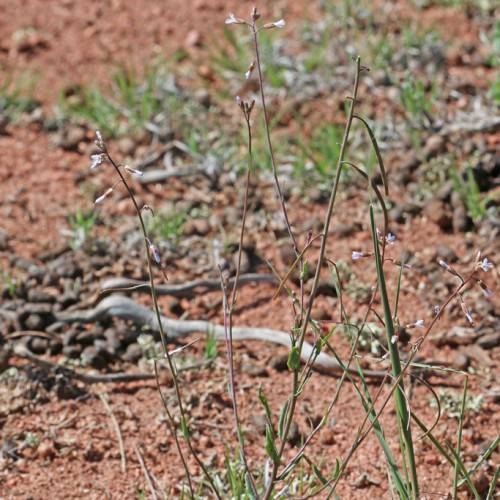
Four Corners Rockcress
Boechera consanguinea
Watering:
Minimal
Hardiness Zone:
Sun:
full sun,part shade
Fruits:
Fruits Ready In
Leaf:
Yes
Growth Rate:
Low
Drought Tolerant:
Yes
Salt Tolerant:
Yes
Care Level:
Medium
watering
When watering Calder's Rockcress, it's important to be mindful of the environment since they are native to the desert regions of California and Oregon. As such, they are used to long dry spells followed by short, flash flood type rain events. To replicate this, water the plant deeply once every 2 weeks, but only if the top soil is dry. If the soil is still moist, skip watering. This species generally prefers soil that is on the drier side and can be prone to root rot if water is given too often. Additionally, keep the plant in an area with plenty of direct sunlight.
sunlight
Calder's Rockcress (Boechera calderi) is best suited for full sun exposure, which means it should receive at least 6 hours of direct sunlight daily. It requires direct sunlight for most of the day, so it should receive at least 4-6 hours of direct sunlight in the morning and 4-6 hours of direct sunlight in the afternoon. It is particularly effective with strong morning sunlight, however, it should still receive some shade during the hottest hours of the day in especially hot climates. During the summer, it should have 3-4 hours of direct sunlight in the evening hours.
pruning
Calder's Rockcress should be minimally pruned, and it is recommended to prune it in late winter or early spring before new growth begins. Pruning too much can result in fewer blooms, so it is best to only remove dead or damaged stems. If the plant is getting too large, then selective pruning of some of the longer branches can help keep a more compact shape. It is also sometimes helpful to prune off the flower stems after they have bloomed to prevent the plant from self seeding.
